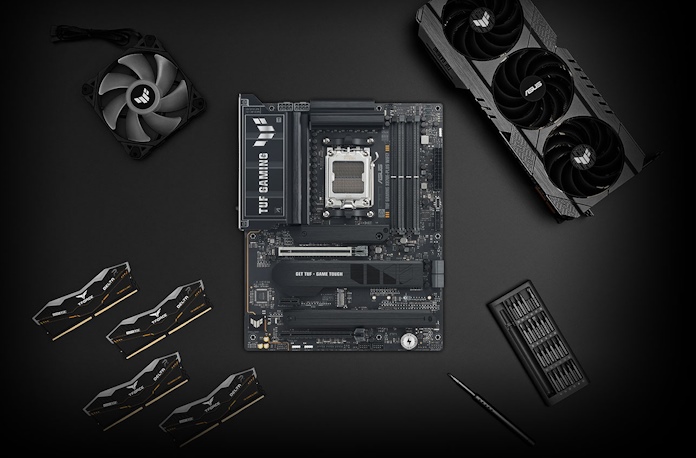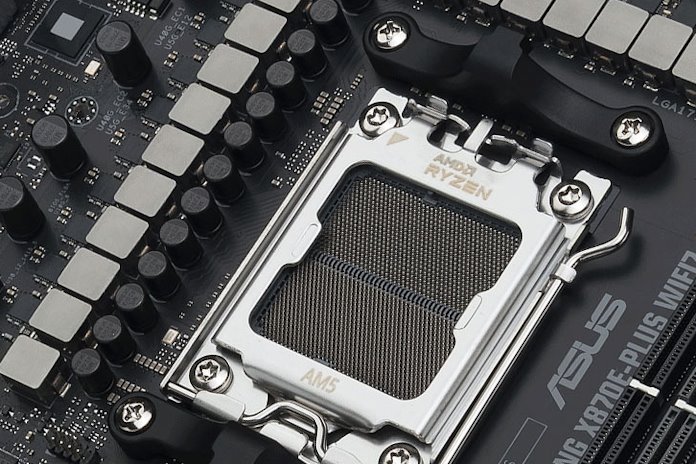Motherboard power solutions do the dirty, often unrecognized work of delivering power to your CPU. But not all motherboard power solutions are made the same. While some are designed to support high-end CPU overclocking, others are built for the quieter life of powering entry-level chips. To make sure that you’re selecting a motherboard that’s right-sized for your next PC — neither overbuilt nor underequipped for your purposes — we’ve put together this quick guide to help you find the motherboard with the best power solution for you.
This article is part of our “Back to Basics” series designed to help PC building newcomers make informed decisions about component purchases and assemble their new PC with confidence. Click here to browse the entire collection of posts.
PC building basics: what is a motherboard power solution?
As the central piece that connects all of your separate components together, motherboards have many jobs to do. One of the most important is delivering power to your CPU.
Power solutions have many components, starting with connectors on your motherboard that provide a direct line to your power supply. From there, a voltage regulator module (VRM) controls the voltage sent along to the CPU. VRMs are subdivided into individual power stages, each with a choke and capacitor. You might expect that all the power stages in your VRM would be running all the time, but that’s not actually true. To reduce the workload for any individual power stage, they actually take turns delivering electricity to the CPU. Under load, power stages create heat, which has to be managed and dissipated for peak performance and long-term reliability. That’s why VRMs also typically have dedicated cooling hardware.
Each part of a motherboard’s power solution can vary from model to model and should be considered as you select a motherboard.
- Power connectors. Different motherboards have different CPU power connector layouts. High-end models might have two 8+8 pin connectors, while motherboards designed for very efficient CPUs might only have a single 4-pin connector. More connectors with more pins means that there’s a reduced workload and potentially lower operating temperatures for each one.
- Cooling hardware. A power-hungry CPU can pull a lot of current, giving your motherboard power solution quite a workout. Most motherboards these days have dedicated VRM heatsinks, but these heatsinks vary in size from model to model. Higher-end motherboards might integrate these heatsinks into the I/O shroud to increase the surface area available for heat dissipation, and they might use a heatpipe to better spread out the heat.
- Number of power stages. Higher-end motherboards include more robust VRM solutions with greater numbers of power stages. This lessens the workload carried by each individual power stage, leading to greater stability, lower operating temperatures, and better longevity.
How many power stages should a motherboard’s VRM have?
When people compare the power solutions of two different motherboards, they often start by looking at the number of power stages. Broadly speaking, it’s better to have more power stages than less. If you’re looking at two motherboards that are similar, but one has more power stages, pick that one. Overworked power stages get hot, and when they get hot, they’re less efficient, and you have a greater risk of system instability. But while more is better, you will see diminishing returns at a certain point. Not every user will take full advantage of the most robust power solutions on the market.
Let’s say that you’re going all-in on CPU performance with a flagship Intel Core Ultra Processor 285K that you’ve pushed to its limits. In this scenario, you’ll appreciate the long-term stability afforded by the ROG Maximus Z890 Extreme, a premium motherboard with a massive 24(110A) +1(90A) +2(90A) +2(80A) power solution. That’s a whopping 24 power stages dedicated to VCORE, the voltage supplied to the all-important processing cores of the CPU, and each of those stages is rated for 110A.
For contrast, consider the needs of builders shopping for a motherboard to accompany the midrange Intel Core Ultra Processor 245K. Can they run this chip with the top-of-the-line Extreme motherboard? Absolutely. But it’ll be a bit like purchasing a heavy-duty truck with beefed-up towing capacity just to take the kids to and from daycare. The vehicle will be up to the task, but that usage scenario doesn’t take full advantage of the truck’s unique capabilities.
Your needs for a motherboard power solution depend on your use cases
To figure out how much you should invest into a motherboard power solution, start by thinking about the tasks that you typically use your PC for. Creative professionals often dial up workloads that make CPUs sing for their supper. That means they’re not only interested in high-end CPUs, they need motherboards with power solutions that can keep their CPUs running close to their limit for extended stretches of time.
Gaming typically puts more stress on your graphics card than your CPU, so your gaming build might not require a top-shelf processor and motherboard. That said, advanced graphics settings like ray tracing increase the processing requirements for both your CPU and GPU. If you’re building a PC for hardcore gaming, it’s worth your while to not only invest in a higher-end CPU but also give it a motherboard with a robust power solution.
If you’re not sure just how CPU-intensive your use cases are, let your current PC be your guide. Use monitoring software like Armoury Crate to keep tabs on your CPU and GPU usage as you go through your typical everyday activities. If you see high CPU usage regularly, then you’ll want to make sure to invest appropriately in your new CPU and motherboard.
For the best experience, get a motherboard and a CPU in the same performance tier
At the very top of our ROG Maximus and ROG Crosshair motherboard families, you’ll find premium options that throw out all the limits when it comes to their power solutions. These cutting-edge options have their place in the PCs of overclocking enthusiasts and power users, especially people who invest in the absolute best CPUs available. But these motherboards also aren’t for everyone.
Let’s say that you’ve opted to step down a notch to an upper-mainstream CPU, like the current best-selling CPU on Amazon (as of July 2025): the AMD Ryzen 7 7800X3D. Even though it’s been surpassed by the AMD Ryzen 7 9800X3D, the last-gen model still has plenty of life in it, and its price tag makes it quite tempting even today.

If you’re building a gaming PC for the Ryzen 7 7800X3D, you don’t necessarily need the beefiest power solution on the market. In many ways, the TUF Gaming X870E-Plus WiFi7 is the perfect fit. This motherboard wields 16+2+1 power stages that integrate high-side and low-side MOSFETs and drivers into packages rated for up to 80A each. This configuration ensures optimal power delivery, efficiency, stability, and performance. Comparable boards from our competitors sometimes cap out at 12 or 14 power stages dedicated to VCORE, all while costing about the same as the TUF model. You probably won’t notice the difference between the power solutions of these different motherboards on your first day of use, but the TUF Gaming board is more likely to give you a long life of service thanks to its bolstered power stage count.
Find the right motherboard for your new CPU
Overall, we think you’ll get the most value over the long term if you purchase a CPU and motherboard that are roughly in the same performance tier. Get a premium motherboard to accompany your premium CPU. Select a mainstream board for your mainstream CPU. Going entry-level with your processor? Feel free to nab a budget-friendly motherboard to go with it.
If you’re not sure which motherboards fit those descriptions, you can let pricing be your guide: for a balanced system, spend about the same amount on your motherboard and CPU. On the AMD side of the CPU aisle, we recommend pairing Ryzen 9 processors with equally top-end X870E motherboards. Owners of Ryzen 7 CPUs have a bit more flexibility, but mainstream X870E options are a safe play. For your Ryzen 5 CPU, a B850 motherboard is a great fit. For those who prefer Intel motherboards, we think that Z890 motherboards are preferable for owners of unlocked Intel Core Ultra 7 or Core Ultra 9 processors, while B860 boards make a lot of sense for owners of mainstream chips.

